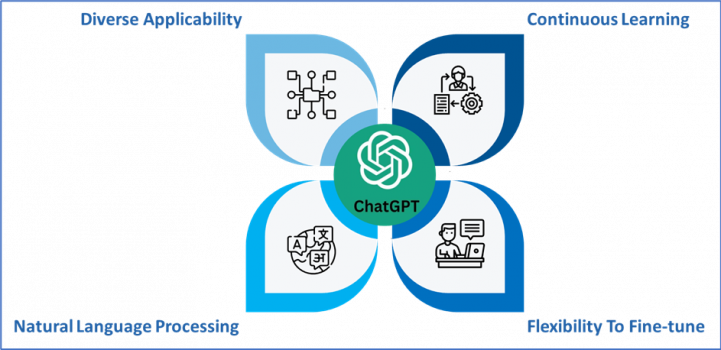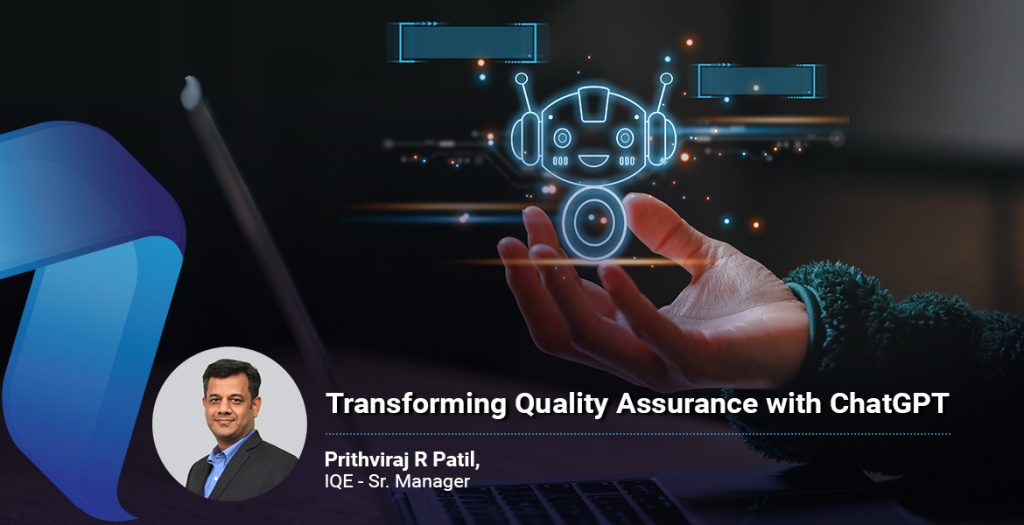Introduction
Quality Assurance (QA) plays a vital role in software development, ensuring adherence to standards and user needs. As technology advances, new tools enhance QA processes. One such innovation is ChatGPT, a Natural Language Processing model developed by OpenAI. In this article, we will explore how ChatGPT can revolutionize the field of Quality Assurance by enhancing efficiency and accuracy.
Understanding ChatGPT
ChatGPT, a Natural Language model, utilizes Deep learning techniques. Trained on extensive data, it produces human-like responses across various prompts, making it versatile for diverse applications. Its proficiency in understanding and generating Natural Language positions it as a valuable asset in Quality Assurance.
Benefits of utilizing ChatGPT as a QA Companion
Time and Workload Efficiency: By delivering instant and precise responses, this system significantly reduces the time spent on manual tasks. QA engineers can swiftly access information, allowing them to focus on critical aspects of their work.
Enhanced User Experience: The personalized assistance provided by this system ensures a positive user experience. Tailored responses address individual needs, leading to higher satisfaction levels.
Automation and Workload Reduction: Repetitive and time-consuming tasks can be automated, freeing up valuable resources. QA engineers can concentrate on more strategic activities, ultimately reducing their workload.
Customizability: The system’s flexibility allows it to be customized according to specific requirements. Whether it’s adapting to different domains or accommodating unique workflows, this adaptability enhances its utility.
Reduced Learning Curve: The Natural Language interface simplifies interaction. New QA engineers can quickly grasp the system’s functionality, accelerating their productivity in creating test cases.
Use Cases where ChatGPT can help,
Below are a few use cases where ChatGPT can help organization to transform their QA practices –
- Test Documentation – ChatGPT can help with format /sections to include in documents like Test Strategy or Test Plan and help with content like defining entry or exit criteria for each stage like System Integration Testing (SIT), User Acceptance Testing (UAT) & Regression Testing etc. It can also help with identifying risk and prepare mitigation plan if information like technologies, application purpose or functionality, targeted end users, business domain is provided.
Ex:
My Prompt: I am part of QA team which supports an application being developed for mutual fund company for mutual fund transaction reconciliation. Application has 4 tracks – Manual Intervention to do transaction adjustments and new fund launch or modify a fund, file processing, data validation & EOD activities like purging, transmitting information to custodians, creating next business day based on business calendar etc. Application will be used by fund managers to see the purchase or redemption trends, outstanding cash etc. Application receives around 150 transaction files from different transfer agents. Application is built on technologies like JAVA, JBPM, Informatica, Web Focus, Oracle, Mainframe, Dojo etc. Help me with top 5 risks related to testing and mitigation plan for each risk in tabular format.
ChatGPT Response:

- Test Case Generation – The QA Engineer can enter prompts to ChatGPT to provide information on requirement or scenario; like, file upload or attachment or boundary values, ChatGPT can then generate a variety of test cases including positive and negative, saving considerable time and effort.
Ex:
My prompt: As a test engineer, help me with test cases to validate file upload where application accepts file only in ‘pdf’, ‘jpg’ & ‘png’ formats. The max file limit is 5 MB
ChatGPT Response:


- Enhancing Test Scenario Exploration – The QA Engineer can provide requirement through prompts to ChatGPT; and ChatGPT can then generate a variety of test scenarios from requirement.
- Analyze Requirements – Given the requirement details, ChatGPT can provide different interpretations of the requirement which can be converted into scenarios.
- As a Learning Companion- ChatGPT can explain any latest trend with example.
- Generating Defect Reports – For high level defect data, ChatGPT can assist in creating a bug report by generating descriptions that highlight the issue, steps to reproduce, and expected outcomes.
- Create SQL Queries – Given a requirement, ChatGPT can help to build generic SQL query which an engineer can tweak as per requirement.
Ex:
My Prompt: I am using Oracle database. Employee table has details of employee and his/her reporting manager names. Please help me with SQL query to show manager name and employees reporting to him.
ChatGPT Response:

- Automation Testing- Given a requirement, tool and scripting language, it can create code snippets.
- Analyze Error Scenarios- Given a platform/technology name, and error code, ChatGPT can provide possible reasons why the error is occurring.
- Tool Comparison – ChatGPT can be used to compare various tools and technologies against various features and capabilities.
Ex:
My Prompt: Please help me with table to compare test automation tools: Selenium, Playwright, Katalon, Tosca, Cypress against features like Web Automation, API Automation, Scripting languages, Mobile Testing, Desktop Application Automation, Continuous integrations, Test Reporting, Open-source or commercial etc.
ChatGPT Response:

- Data Generation Using Excel Macros – ChatGPT can be used to develop excel macros to generate large volumes of test data.
- Data /Report Validation Using Excel Macros – ChatGPT can be used to develop excel macros to compare reports or data.

Limitations:
- Lack of domain-specific knowledge: ChatGPT’s responses may lack domain-specific understanding or knowledge of industry-specific standards and practices relevant to software quality assurance.
- Inability to execute tests: While ChatGPT can help to generate test cases, it cannot execute them directly or interact with software systems to validate functionality, which limits its usage in practical testing scenarios.
- Limited understanding of complex requirements: ChatGPT may not be effective in understanding complex software requirements, especially those involving complex business logic or regulatory compliance or flow involving multiple applications.
- Difficulty in assessing non-functional requirements: ChatGPT may not be effective in evaluating non-functional requirements of application such as performance, security, and usability, which are crucial components of software quality.
- Reliance on human oversight: As an AI model, ChatGPT depends on human supervision to maintain the accuracy and appropriateness of its outputs, potentially leading to the introduction of subjectivity and bias in Software Quality Assurance processes.
- Lack of real-time feedback: ChatGPT cannot provide real-time feedback on software behavior or identify issues during dynamic testing scenarios, limiting its effectiveness in continuous integration and delivery environments.
Conclusion and Next Steps:
ChatGPT provides a good foundation or starting point for generating responses, yet its full potential is realized when skilled testers refine its outputs. By employing effective learning techniques, such as continuous training, the quality of ChatGPT’s responses can be significantly improved over time. It’s important to regard these responses as suggestions rather than absolute directives, acknowledging the need for human judgment in the testing process. Understanding and harnessing the capabilities of ChatGPT enables testers to leverage its strengths effectively. Continued experimentation with ChatGPT allows testers to identify and implement the most suitable responses, ensuring optimal performance in various contexts.
References:
- https://qualityworkscg.com/3-ways-chatgpt-will-change-qa-testing-forever/
- https://mailosaur.com/blog/5-chatgpt-prompts-to-try-as-a-qa-engineer
- https://www.linkedin.com/pulse/how-chatgpt-creating-buzz-qa-testing-algoshack
- https://medium.com/@tadasgym95/chat-gpt-a-game-changing-tool-for-quality-assurance-professionals-8977791e0280
- https://www.qable.io/blog/top-10-chatgpt-prompts-for-quality-testing
Author Bio:

Prithviraj R Patil
IQE - Sr. Manager
A seasoned Senior Manager with 18+ years of experience in QA & Automation testing. Experience across domains including Energy, Hi-Tech, Financial Services, and Investment Banking. Expertise in testing proposals & solutions, Onshore & Offshore delivery model, automation framework enhancement, managing & delivering test automation projects on wide range of automation testing tools like UFT, Worksoft, UiPath, Selenium and Appium.






